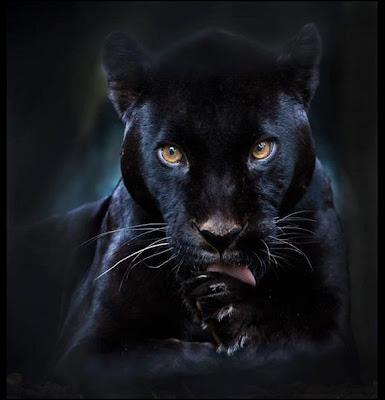A black panther is typically a melanistic color variant of any of several species of larger cat. In Latin America, wild 'black panthers' may be black jaguars; in Asia and Africa, black leopards ; in Asia, possibly the very rare black tigers; and in North America they may be black jaguars or possibly black cougars (Puma concolor – although this has not been proven to have a black variant), or smaller cats.
Not certain of which applies to this fella.
Tid Bit - It is a myth that black leopards are often rejected by their mothers at an early age because of their color. In actuality, poor temperament has been bred into the captive strains as a side-effect of inbreeding and it is this poor temperament that leads to problems of maternal care in captivity. According to Funk and Wagnalls' Wildlife Encyclopedia, captive black leopards are less fertile than normal leopards, with average litter sizes of 1.8 and 2.1, respectively. This is likely due to inbreeding depression.

